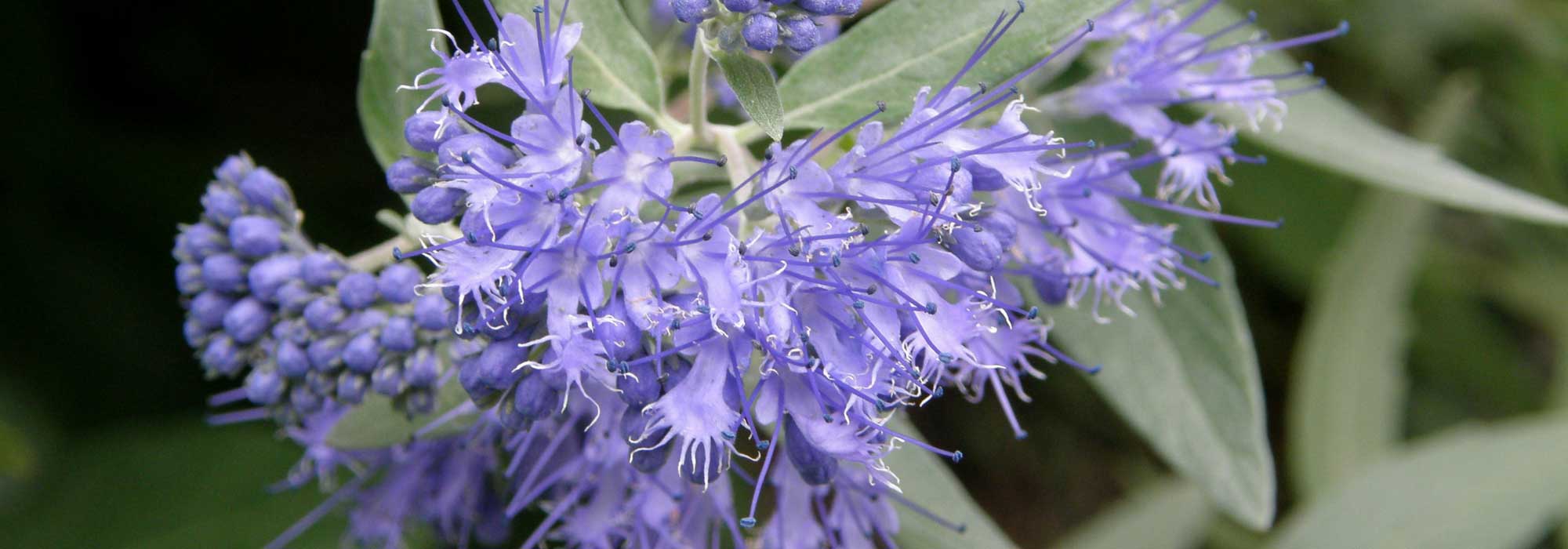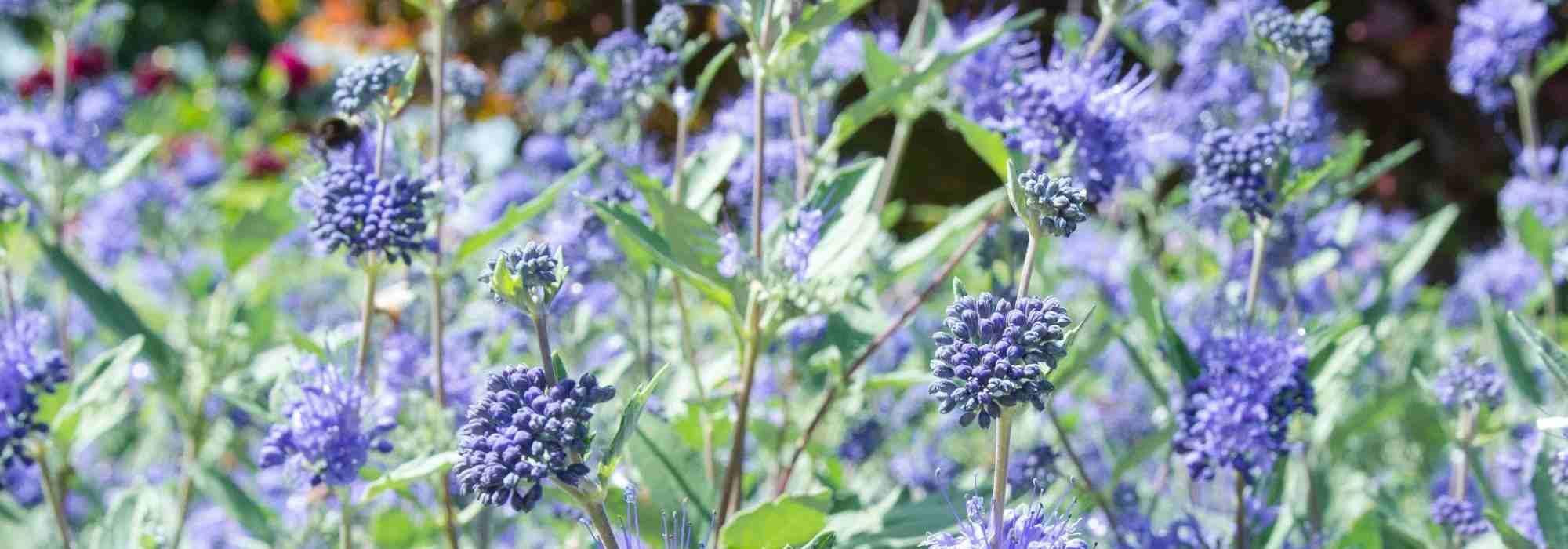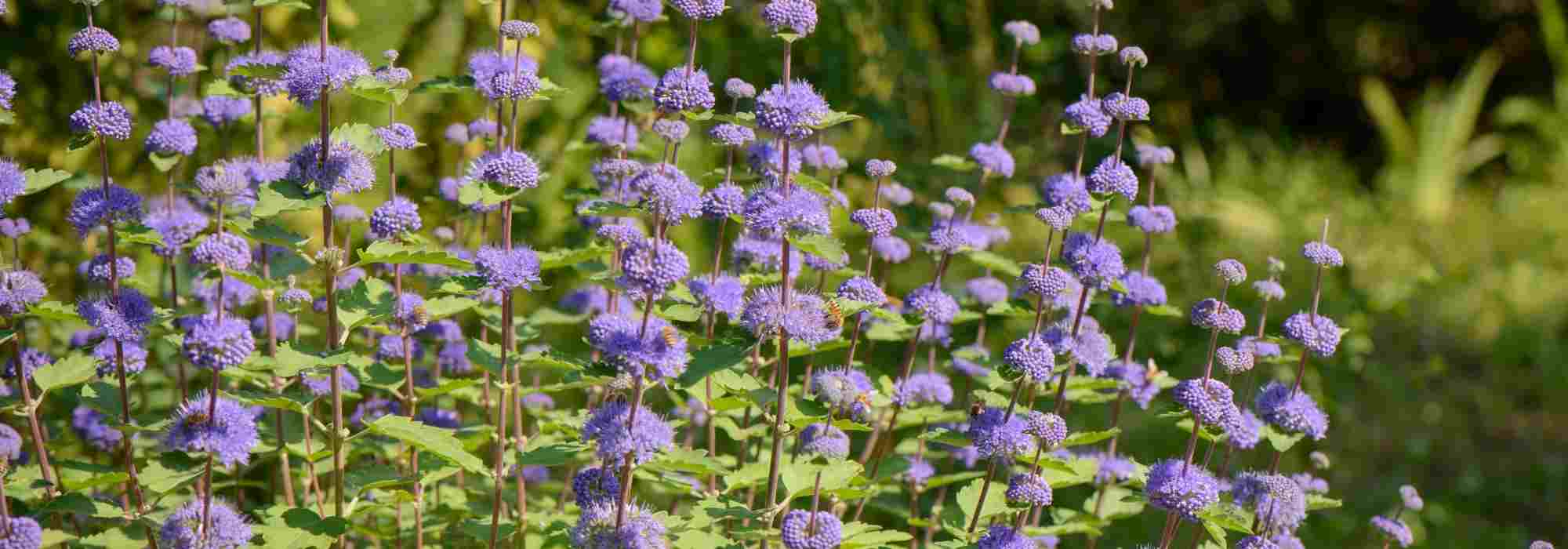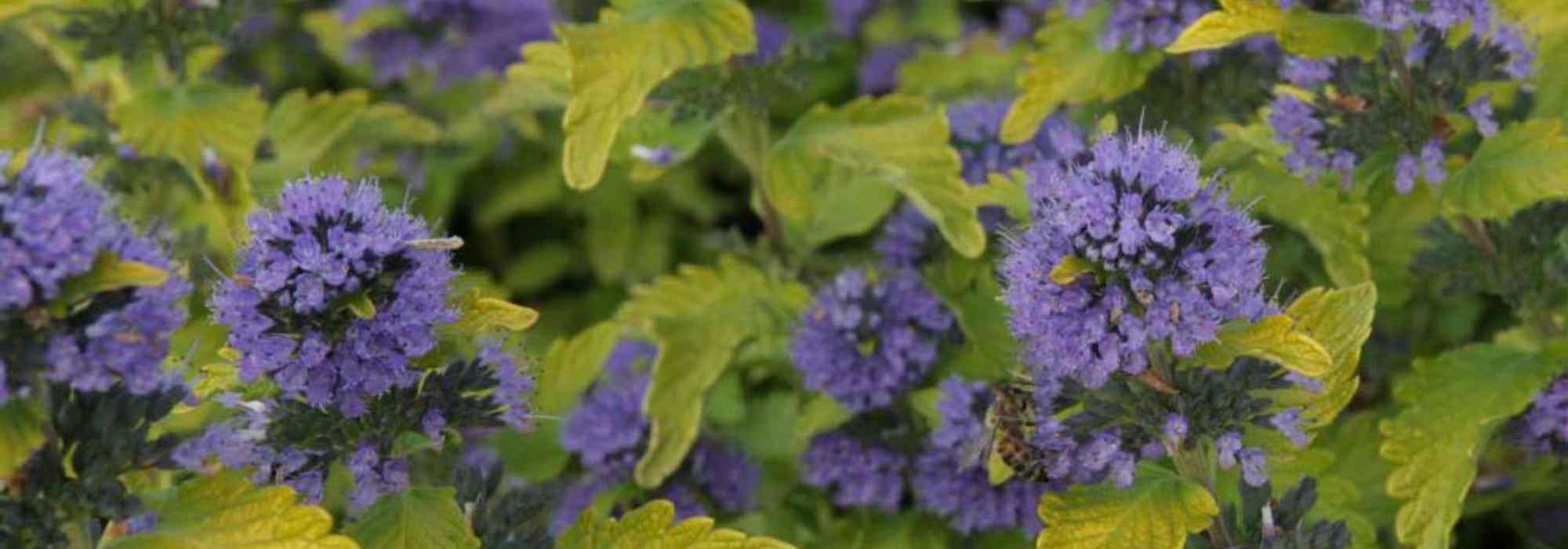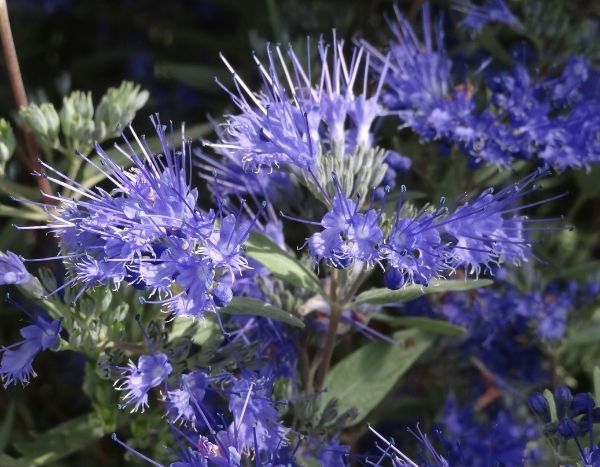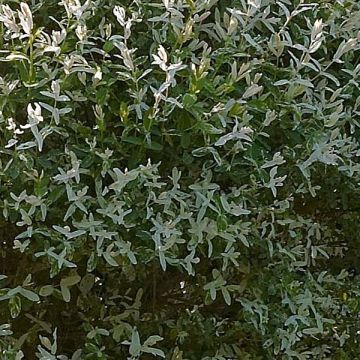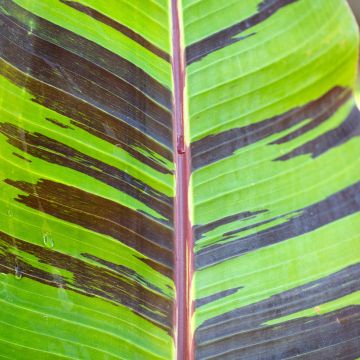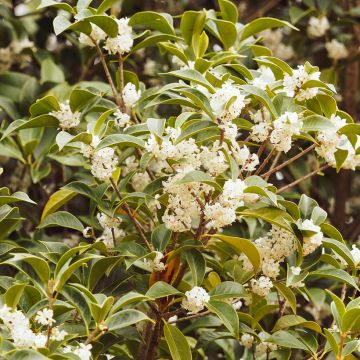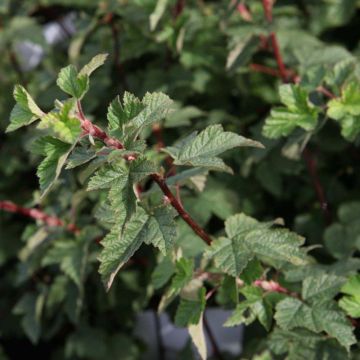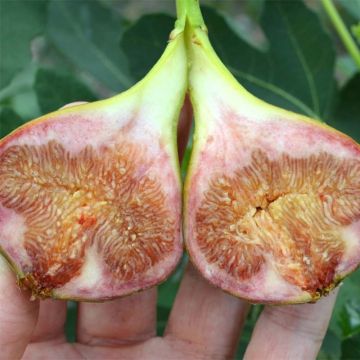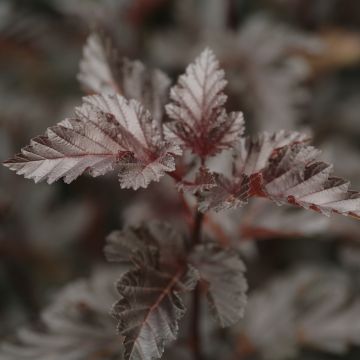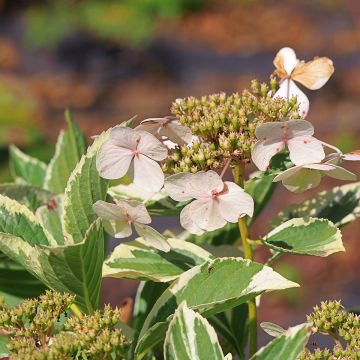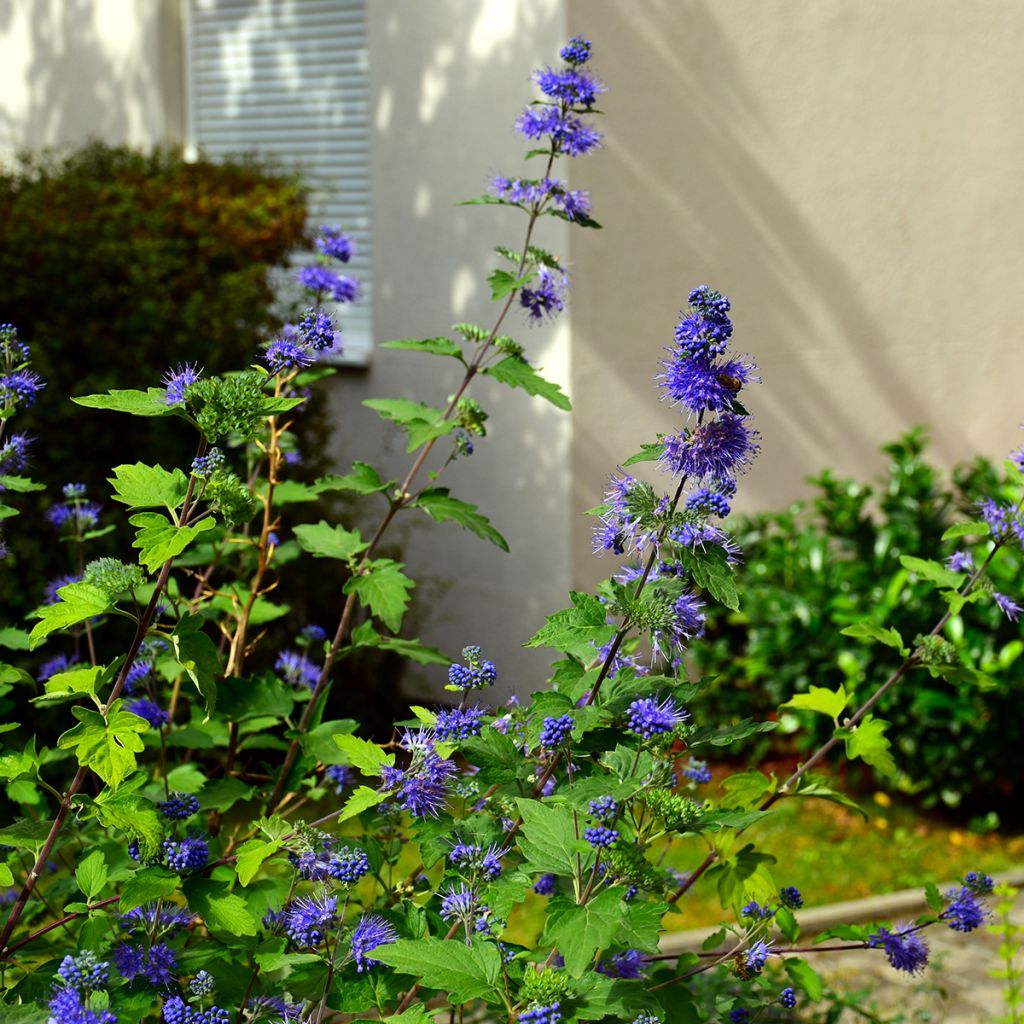

Caryopteris x clandonensis Kew Blue - Bluebeard
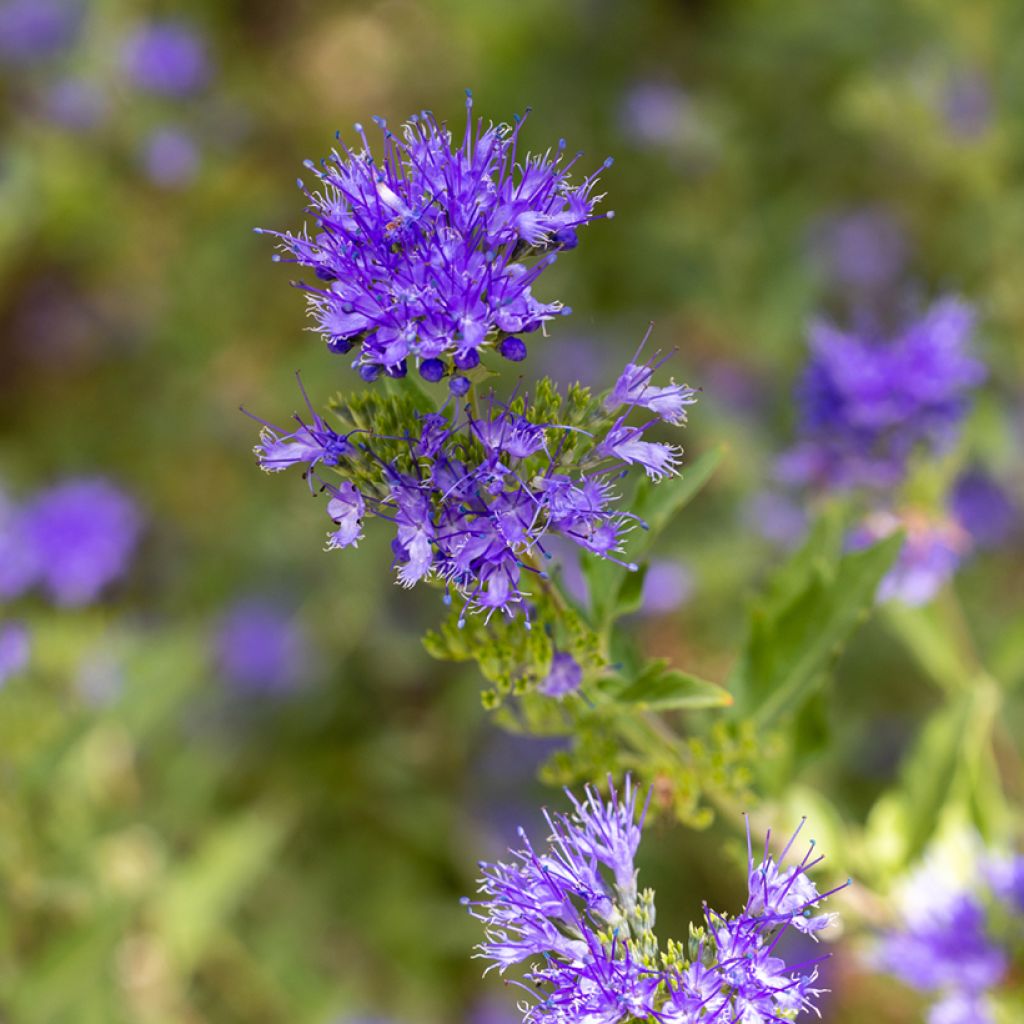

Caryopteris x clandonensis Kew Blue - Bluebeard
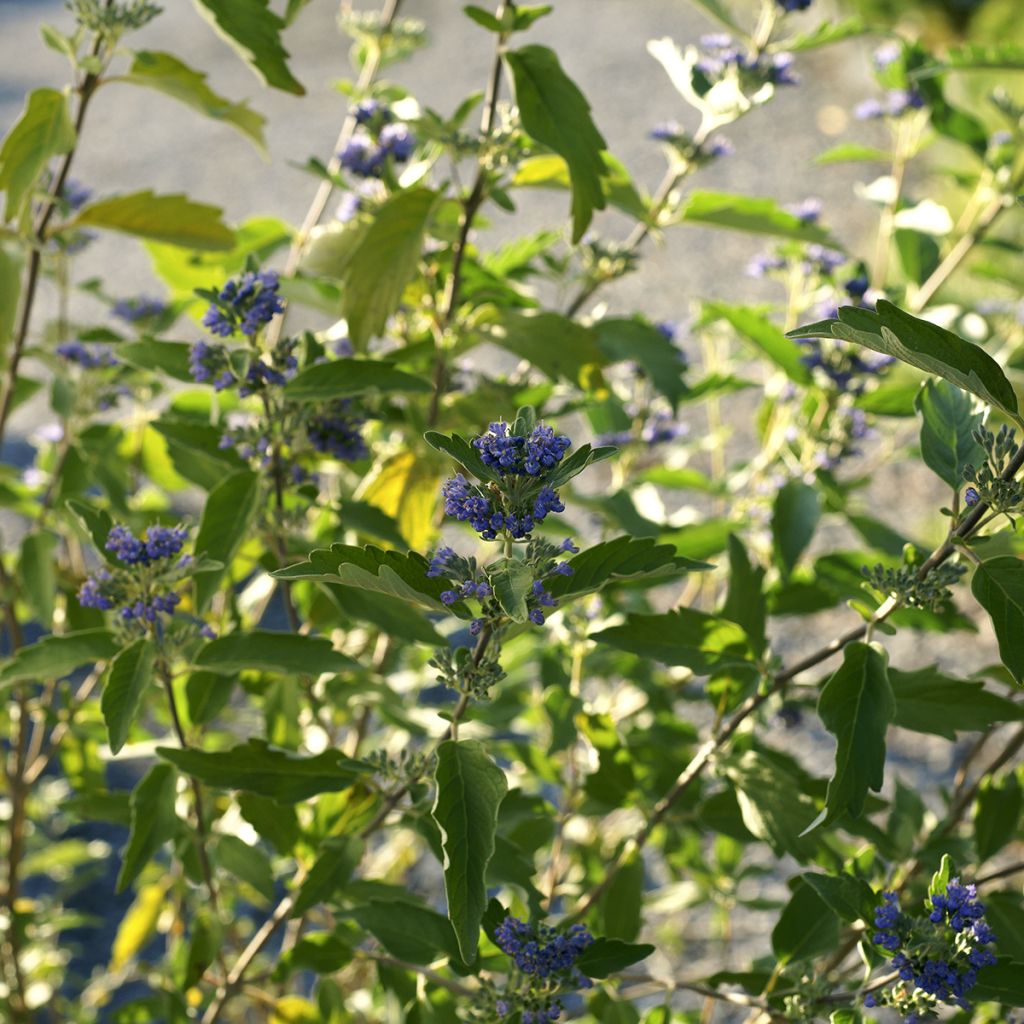

Caryopteris x clandonensis Kew Blue - Bluebeard


Caryopteris x clandonensis Kew Blue - Bluebeard
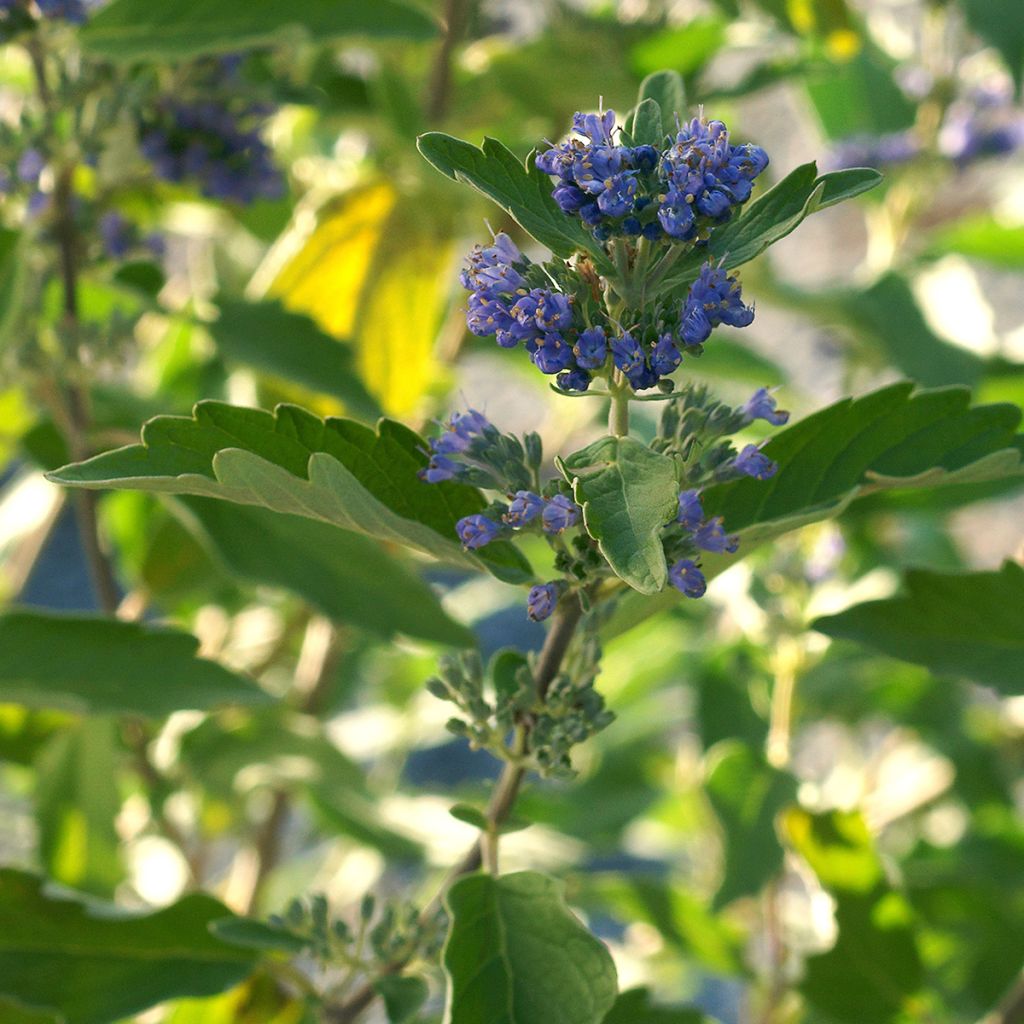

Caryopteris x clandonensis Kew Blue - Bluebeard
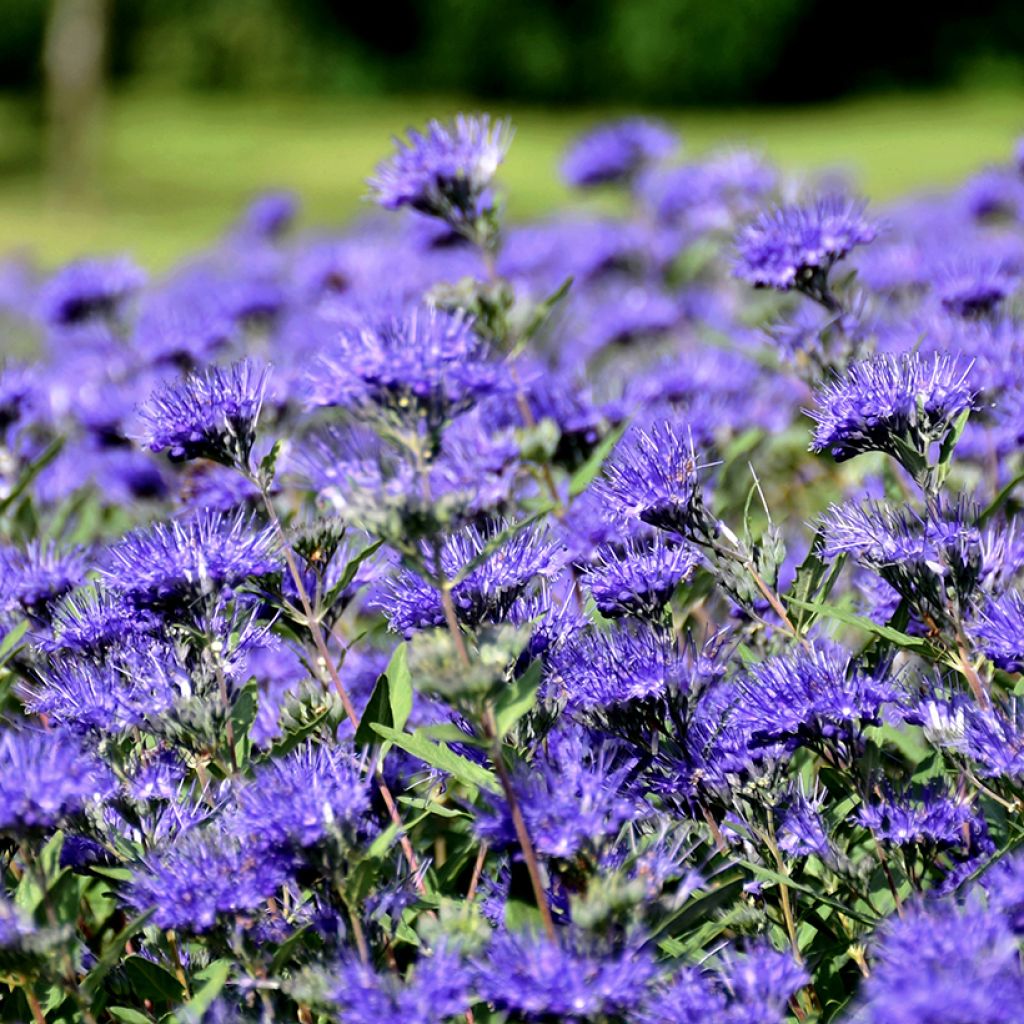

Caryopteris x clandonensis Kew Blue - Bluebeard
Caryopteris x clandonensis Kew Blue - Bluebeard
Caryopteris x clandonensis Kew Blue
Bluebeard
Special offer!
Receive a €20 voucher for any order over €90 (excluding delivery costs, credit notes, and plastic-free options)!
1- Add your favorite plants to your cart.
2- Once you have reached €90, confirm your order (you can even choose the delivery date!).
3- As soon as your order is shipped, you will receive an email containing your voucher code, valid for 3 months (90 days).
Your voucher is unique and can only be used once, for any order with a minimum value of €20, excluding delivery costs.
Can be combined with other current offers, non-divisible and non-refundable.
Home or relay delivery (depending on size and destination)
Schedule delivery date,
and select date in basket
This plant carries a 24 months recovery warranty
More information
We guarantee the quality of our plants for a full growing cycle, and will replace at our expense any plant that fails to recover under normal climatic and planting conditions.
Would this plant suit my garden?
Set up your Plantfit profile →
Description
Caryopteris x clandonensis 'Kew Blue' is a shrub or small bush highly appreciated for its superb late summer flowering. With a dense habit, this 'blue spirea' has green foliage with a touch of grey that becomes pleasantly aromatic when crushed. Its late flowering in feathery clusters bursts with an intense violet-blue colour that is truly remarkable. A true sun-loving plant, it thrives in well-drained, even dry soil, and shows good hardiness in these conditions. A charming bush to integrate in the foreground of a diverse flower bed or in a low composite hedge.
Caryopteris belongs to the Verbenaceae family, which includes several ornamental genera (Lantana, Verbena, Clerodendrum...), some of which are aromatic. The hybrid Caryopteris x clandonensis was obtained in the 1930s by Arthur Simmonds, secretary of the prestigious English RHS (Royal Horticultural Society). Its two parents are Caryopteris incana, a small oriental bush (China, Japan, Korea), and C. mongolica, a dwarf bush with large blue flowers, originally from Mongolia (and China), as its name suggests.
'Kew Blue' is a variety that forms a dense bush of about 1m (3ft) in height, or a bit more, with a width of 80cm (32in). It mainly blooms in August-September, sometimes as early as July or as late as October, on terminal branches and lower nodes. Intensely blue, tending towards violet-blue, the inflorescences are composed of numerous small flowers with prominent stamens, giving them a slightly feathery appearance. They stand out well against the fairly dark, somewhat greyish green foliage. The leaves, which are quite short at approximately 4cm (2in) in length, are narrow and have small teeth along the edges. When crushed, they release a pleasant fragrance. This deciduous foliage is absent in winter.
Caryopteris 'Kew Blue' is one of those precious plants for summer, as it is very floriferous and easy to grow, even in dry conditions. You can combine it with other understated plants to create a low-maintenance flower bed. Cotinus coggygria Golden Lady placed behind it will create a dazzling contrast with its yellow foliage that turns orange in autumn, while its airy inflorescences develop from June to August. In milder climates, you can achieve a beautiful colour combination by planting a Lavatera Burgundy Wine, with its beautiful funnel-shaped purple-pink flowers that succeed each other from June to October. To continue with strong colorful contrasts, nothing beats a cushion of yellow Evening Primrose, like the Oenothera fruticosa Camel which will reward you with its bright golden-yellow flowers throughout the summer!
Caryopteris x clandonensis Kew Blue - Bluebeard in pictures
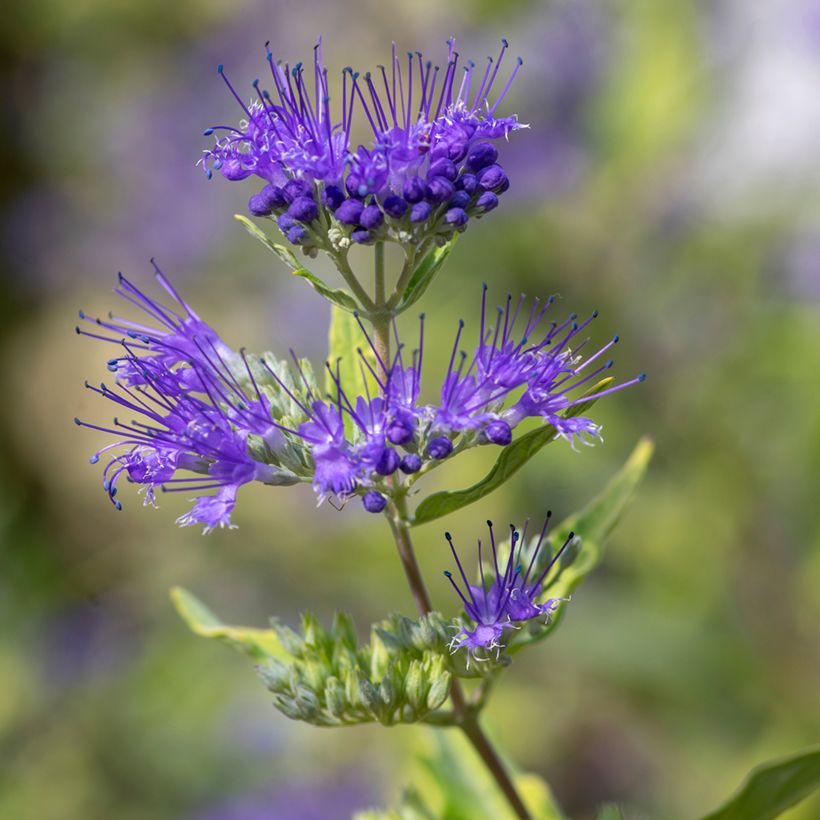

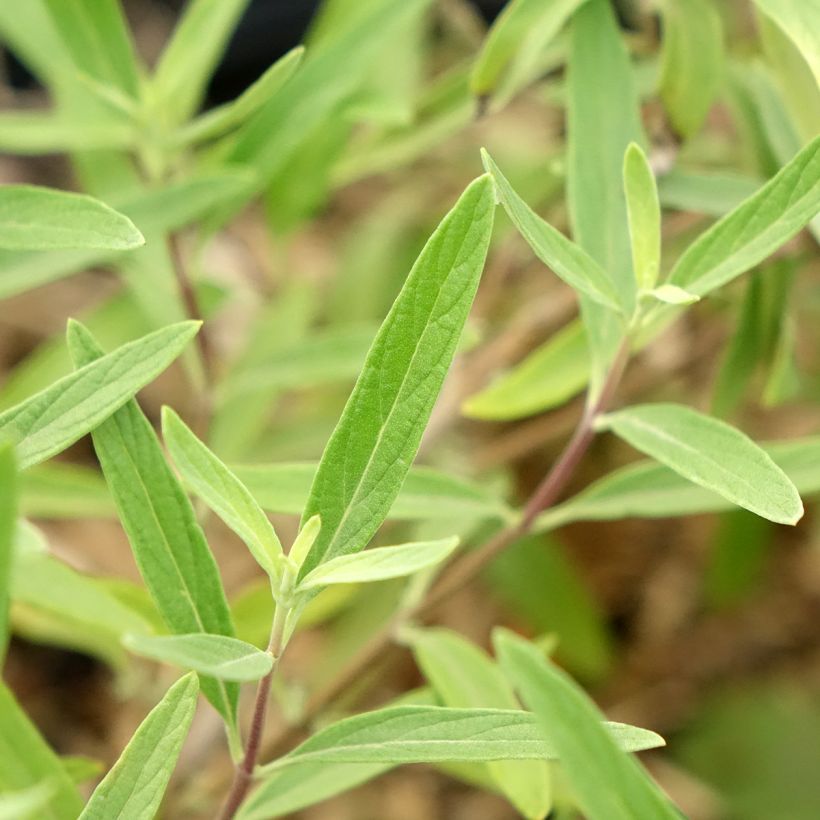

Plant habit
Flowering
Foliage
Botanical data
Caryopteris
x clandonensis
Kew Blue
Verbenaceae
Bluebeard
Cultivar or hybrid
Planting and care
Caryopteris are plants that thrive in sunny and well-drained soil. They should be planted early in autumn or in spring in colder regions, in a very sunny location and in a light, well-drained soil, even if it is stony or sandy, but still fairly deep. While Caryopteris can tolerate limestone, it will be more beautiful in humus-rich soil, with a neutral pH or even slightly acidic. In fact, it adapts to most soil types. However, a waterlogged soil in winter will greatly affect its hardiness. In well-drained soil, this plant can withstand temperatures as low as -20°C (-4°F). Prune in late winter or very early spring to maintain a compact habit and promote the appearance of flowers on the young shoots of the year.
Planting period
Intended location
Care
Planting & care advice
This item has not been reviewed yet - be the first to leave a review about it.
Similar products
Haven't found what you were looking for?
Hardiness is the lowest winter temperature a plant can endure without suffering serious damage or even dying. However, hardiness is affected by location (a sheltered area, such as a patio), protection (winter cover) and soil type (hardiness is improved by well-drained soil).

Photo Sharing Terms & Conditions
In order to encourage gardeners to interact and share their experiences, Promesse de fleurs offers various media enabling content to be uploaded onto its Site - in particular via the ‘Photo sharing’ module.
The User agrees to refrain from:
- Posting any content that is illegal, prejudicial, insulting, racist, inciteful to hatred, revisionist, contrary to public decency, that infringes on privacy or on the privacy rights of third parties, in particular the publicity rights of persons and goods, intellectual property rights, or the right to privacy.
- Submitting content on behalf of a third party;
- Impersonate the identity of a third party and/or publish any personal information about a third party;
In general, the User undertakes to refrain from any unethical behaviour.
All Content (in particular text, comments, files, images, photos, videos, creative works, etc.), which may be subject to property or intellectual property rights, image or other private rights, shall remain the property of the User, subject to the limited rights granted by the terms of the licence granted by Promesse de fleurs as stated below. Users are at liberty to publish or not to publish such Content on the Site, notably via the ‘Photo Sharing’ facility, and accept that this Content shall be made public and freely accessible, notably on the Internet.
Users further acknowledge, undertake to have ,and guarantee that they hold all necessary rights and permissions to publish such material on the Site, in particular with regard to the legislation in force pertaining to any privacy, property, intellectual property, image, or contractual rights, or rights of any other nature. By publishing such Content on the Site, Users acknowledge accepting full liability as publishers of the Content within the meaning of the law, and grant Promesse de fleurs, free of charge, an inclusive, worldwide licence for the said Content for the entire duration of its publication, including all reproduction, representation, up/downloading, displaying, performing, transmission, and storage rights.
Users also grant permission for their name to be linked to the Content and accept that this link may not always be made available.
By engaging in posting material, Users consent to their Content becoming automatically accessible on the Internet, in particular on other sites and/or blogs and/or web pages of the Promesse de fleurs site, including in particular social pages and the Promesse de fleurs catalogue.
Users may secure the removal of entrusted content free of charge by issuing a simple request via our contact form.
The flowering period indicated on our website applies to countries and regions located in USDA zone 8 (France, the United Kingdom, Ireland, the Netherlands, etc.)
It will vary according to where you live:
- In zones 9 to 10 (Italy, Spain, Greece, etc.), flowering will occur about 2 to 4 weeks earlier.
- In zones 6 to 7 (Germany, Poland, Slovenia, and lower mountainous regions), flowering will be delayed by 2 to 3 weeks.
- In zone 5 (Central Europe, Scandinavia), blooming will be delayed by 3 to 5 weeks.
In temperate climates, pruning of spring-flowering shrubs (forsythia, spireas, etc.) should be done just after flowering.
Pruning of summer-flowering shrubs (Indian Lilac, Perovskia, etc.) can be done in winter or spring.
In cold regions as well as with frost-sensitive plants, avoid pruning too early when severe frosts may still occur.
The planting period indicated on our website applies to countries and regions located in USDA zone 8 (France, United Kingdom, Ireland, Netherlands).
It will vary according to where you live:
- In Mediterranean zones (Marseille, Madrid, Milan, etc.), autumn and winter are the best planting periods.
- In continental zones (Strasbourg, Munich, Vienna, etc.), delay planting by 2 to 3 weeks in spring and bring it forward by 2 to 4 weeks in autumn.
- In mountainous regions (the Alps, Pyrenees, Carpathians, etc.), it is best to plant in late spring (May-June) or late summer (August-September).
The harvesting period indicated on our website applies to countries and regions in USDA zone 8 (France, England, Ireland, the Netherlands).
In colder areas (Scandinavia, Poland, Austria...) fruit and vegetable harvests are likely to be delayed by 3-4 weeks.
In warmer areas (Italy, Spain, Greece, etc.), harvesting will probably take place earlier, depending on weather conditions.
The sowing periods indicated on our website apply to countries and regions within USDA Zone 8 (France, UK, Ireland, Netherlands).
In colder areas (Scandinavia, Poland, Austria...), delay any outdoor sowing by 3-4 weeks, or sow under glass.
In warmer climes (Italy, Spain, Greece, etc.), bring outdoor sowing forward by a few weeks.






























